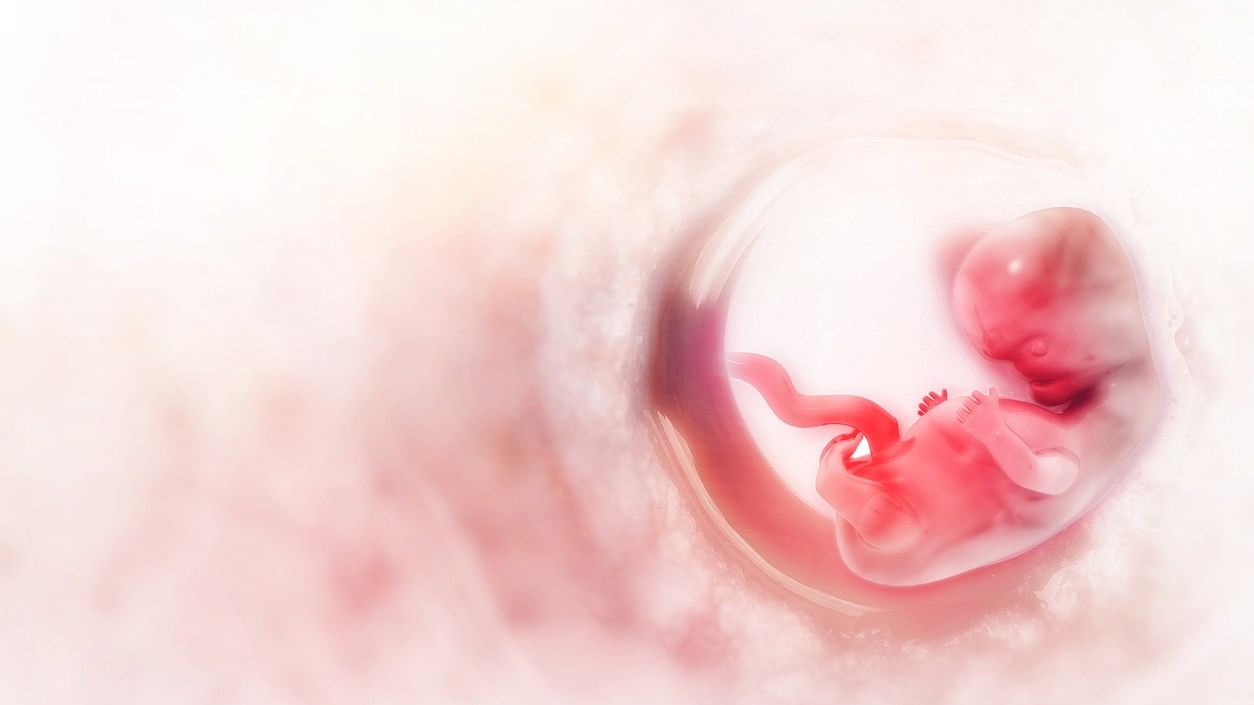
Called ‘Garbhini-GA2’, this is the first late-trimester GA estimation model to be developed and validated using Indian population data, they said.
Credit: iStock Photo
Chennai: Researchers with the prestigious Indian Institute of Technology Madras (IIT-M) and Translational Health Science and Technology Institute (THSTI), Faridabad, have developed the country’s first AI model that will precisely determine the age of foetus in pregnant women in the second and third trimesters.
‘Garbhini-GA2’, a population-specific model based on artificial intelligence for estimating gestational age, is expected to reduce the error by almost three times as currently the age of a foetus is determined using a formula developed for the Western population.
Developed as part of Interdisciplinary Group for Advanced Research on Birth Outcomes – DBT India Initiative (GARBH-Ini) program, the new GA model is likely to help doctors determine precise delivery dates as it has been developed and validated using Indian population data.
The findings of the research undertaken by Dr Himanshu Sinha, Associate Professor, Bhupat and Jyoti Mehta School of Biosciences, IIT-M, and Dr Shinjini Bhatnagar, Professor, THSTI, have been published in the prestigious international peer-reviewed journal Lancet Regional Health Southeast Asia.
The study was conducted in partnership with Gurugram Civil Hospital, Gurugram, Safdarjung Hospital, New Delhi, Christian Medical College Vellore, and Pondicherry Institute of Medical Sciences, Puducherry.
Researchers said the new model will immensely help doctors and patients as dating based on formulae developed with Western data tends to be less accurate in the Indian population due to the variations in foetal growth.
They used genetic algorithm-based methods to develop Garbhini-GA2, which, when applied in the second and third trimesters of pregnancy, was more accurate than the current Hadlock and recent INTERGROWTH-21st models. The Garbhini-GA2 model, compared to Hadlock, reduces the GA estimation median error by more than three times, the study said.
The new model used three routinely measured foetal ultrasound parameters, which was developed using GARBH-Ini cohort data documented at Gurugram Civil Hospital, Haryana, and was validated in an independent cohort in South India, the study added.
Application of Indian population-specific GA formulae with better accuracy can potentially improve pregnancy care, leading to better outcomes and the accurate dating will also enhance the precision of epidemiological estimates for pregnancy outcomes in the country.
“We are utilising advanced data science and AI/ML techniques to build tools to predict unfavourable birth outcomes. The first step towards this is to develop accurate GA models that perform significantly better than currently used models designed using Western populations,” Sinha said.
Dr Bhatnagar said improving the GA accuracy is a critical component of the broader goals of the GARBH-Ini study, which aims to reduce the adverse pregnancy outcomes.
“The mere application of sophisticated data science tools is not sufficient. The crux of ensuring that these technological advancements yield tangible benefits in the clinical realm lies in the end-to-end partnership between clinicians and data scientists,” she said.
Once validated in prospective pan-India cohorts, Garbhini-GA2 can be deployed in clinics across India, improving the care delivered by obstetricians and neonatologists, thus reducing maternal and infant mortality rates in India.